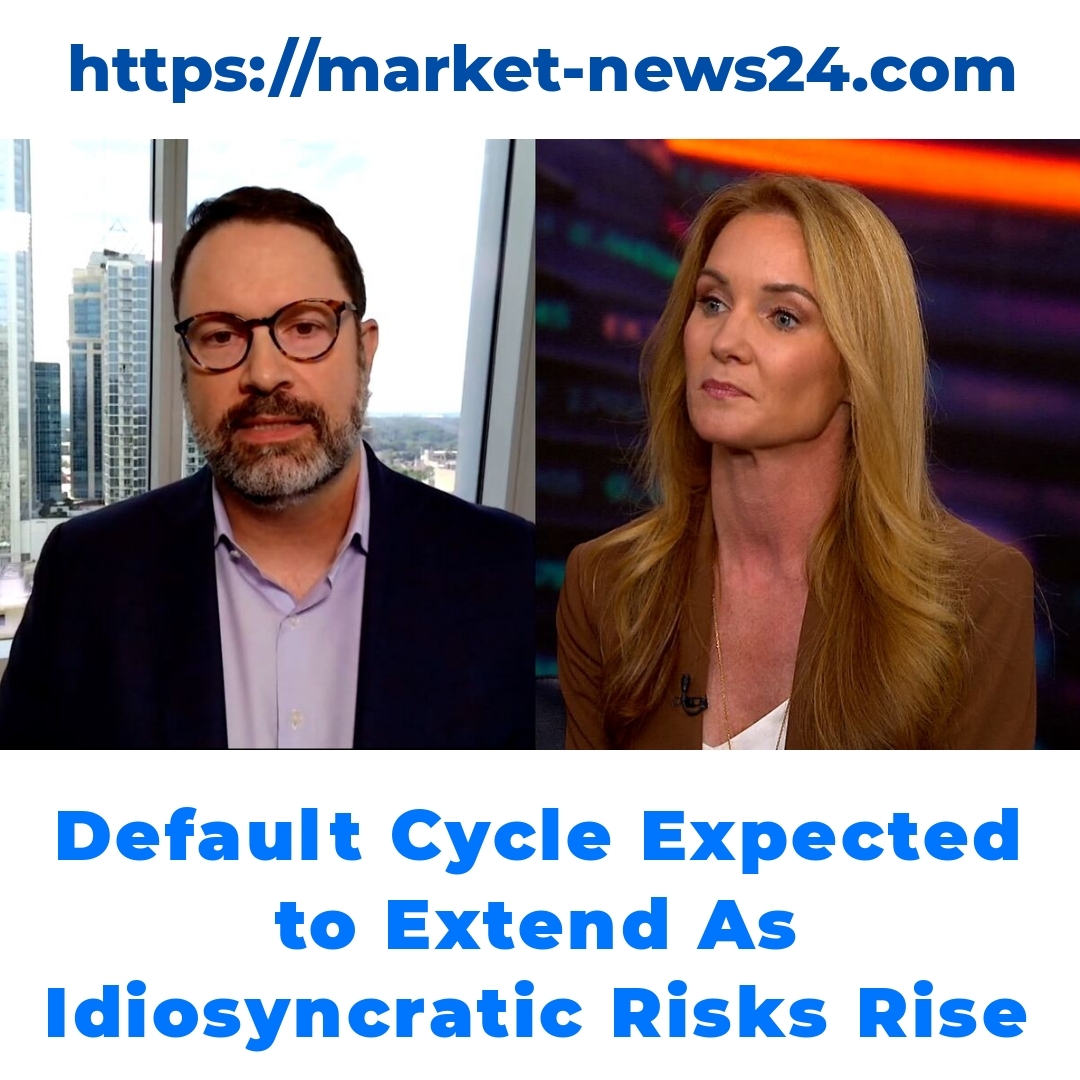The high yield debt market plays a crucial role in the financial landscape, offering investors opportunities amidst varying economic climates. Insights from industry experts, including Michael Best of Barings and Maureen O’Connor of Wells Fargo, shed light on the current default cycle, idiosyncratic risks, and their implications for debt investment strategies, discussed on Bloomberg Real Yield.


The Current High Yield Debt Environment
Let’s dive into the current landscape of high yield debt. High yield debt, often referred to as junk bonds, includes bonds that have a lower credit rating than investment-grade securities. These bonds offer higher interest rates to attract investors taking on more risk. Currently, this market is significant as it enables companies, especially those with less stable finances, to borrow money for growth or to manage existing debt. Recent trends show a mixed performance among issuers, with some benefiting from the current economic climate while others face challenges.
Importance of Monitoring the Default Cycle
One key aspect to consider when investing in high yield debt is the default cycle. This refers to the pattern of defaults in the bond market. It’s vital for investors to keep an eye on this cycle as it directly impacts their investment decisions. If more companies are defaulting, it might indicate an economic downturn, making high yield debt riskier. Understanding the default cycle helps investors anticipate market shifts and adjust their portfolios accordingly.
Insights from Industry Experts
Michael Best’s Perspective on the Default Cycle
Moving on, let’s explore what industry experts are saying. Michael Best, a portfolio manager at Barings, has shared his insights on the current default cycle. He predicts that we may be looking at a prolonged default cycle lasting one to two years. This means that investors need to be prepared for increased defaults, which could impact high yield portfolio management. Knowing this helps investors strategize on how to navigate these turbulent times.
Maureen O’Connor’s Take on Idiosyncratic Risk
Another important perspective comes from Maureen O’Connor of Wells Fargo. She discusses the rising prevalence of idiosyncratic risk in the high yield debt market. But what exactly is idiosyncratic risk? It refers to the risk that is unique to a specific company or asset. As corporations face varying challenges, this type of risk can significantly impact high yield debt investments. Investors must be aware of these risks as they can lead to significant losses if not managed properly.
The Impact of the Default Cycle on High Yield Investments
Historical Context of Default Cycles
Now, let’s take a closer look at how previous default cycles have influenced high yield debt. Historically, we’ve witnessed various default cycles causing fluctuations in the market. For instance, during economic downturns, such as the 2008 financial crisis, default rates surged, leading to a significant decline in the high yield market. By studying these trends, investors can better understand potential future risks and rewards.
Current Predictions and Trends
As for current predictions, experts anticipate a notable increase in defaults in the coming years. The anticipated economic conditions, including rising interest rates and inflation, may lead to more companies struggling to meet their debt obligations. Analyzing these predictions closely can help investors make informed decisions about their high yield debt allocations.
Strategies for Managing Idiosyncratic Risk in Debt Markets
Identification of Idiosyncratic Risks
To successfully manage high yield debt investments, it’s crucial to identify sources of idiosyncratic risks. Common sources may include changes in management, competitive pressures, or unexpected shifts in market demand. By pinpointing these risks, investors can better navigate their choices and stay ahead in the market.
Risk Management Techniques
So, how can you mitigate these risks? Here are a few practical tips for high yield portfolio management:
- Diversification: Spread your investments across various industries and issuers to reduce the impact of any single default.
- Continuous Monitoring: Regularly review the financial health of your investments and the overall market landscape.
- Focus on Quality: While high yield debt can be enticing due to its returns, investing in higher-quality issuers can help lower your risk exposure.
Current Trends in High Yield Debt and Default Predictions
Influencing Factors on the High Yield Market
Let’s examine what’s currently influencing the high yield debt market. Economic factors, including interest rates and inflation, play a significant role in shaping investors’ strategies. As interest rates rise, the cost of borrowing increases, which might lead to more defaults among high yield issuers. Staying updated on these conditions is essential for making sound investment decisions.
Expert Opinions from Bloomberg Real Yield
Recently, episodes from Bloomberg Real Yield have provided valuable insights into market dynamics. Experts discussed how the current economic climate affects default rates and the overall performance of high yield debt. Keeping up with such analyses can give investors an edge and help them understand the nuances of the market.
Conclusion
In summary, understanding the current landscape of high yield debt is crucial for any investor. The ongoing default cycle and rising idiosyncratic risks present both challenges and opportunities. Investors should be proactive in monitoring these factors and applying effective strategies in their high yield portfolio management. Navigating this market might seem daunting, but with the right insights and approaches, you can succeed in making informed investment decisions.
To stay ahead, it’s important to remain informed about the latest trends in high yield debt. Consider following Bloomberg Real Yield for ongoing insights from industry experts. This knowledge will not only help you understand the market better but will also empower you to make smarter investment choices.
FAQ Section
What is high yield debt?
High yield debt, commonly known as junk bonds, refers to bonds that have a lower credit rating compared to investment-grade securities. These bonds offer higher interest rates to compensate investors for taking on more risk.
Why is monitoring the default cycle important for investors?
The default cycle indicates how often companies default on their bond payments. Keeping track of this cycle is crucial because a rise in defaults can signal potential economic downturns, making high yield debt investments riskier.
What is idiosyncratic risk in the context of high yield debt?
Idiosyncratic risk refers to the risks specific to a company or asset that can affect its performance. This can include factors like changes in management or shifts in market demand. Investors should be aware of these risks to prevent significant losses.
How have historical default cycles influenced high yield debt?
Historical default cycles have caused notable fluctuations in the high yield market. For example, during the 2008 financial crisis, default rates surged, leading to a significant market decline. Studying past cycles helps investors understand potential future risks.
What current trends are influencing the high yield debt market?
Key economic factors, including rising interest rates and inflation, are currently shaping the high yield debt market. As interest rates rise, the cost of borrowing increases, potentially leading to more defaults among high yield issuers.
What strategies can be used to manage idiosyncratic risk?
To manage idiosyncratic risks effectively, consider the following strategies:
- Diversification: Spread investments across different industries and issuers to minimize the impact of any single default.
- Continuous Monitoring: Regularly check the financial health of your investments and the market environment.
- Focus on Quality: Invest in higher-quality issuers to lower your risk exposure, even if their returns might be lower.
How can I stay updated on the high yield debt market?
To stay informed about current trends in high yield debt, consider following financial news sources such as Bloomberg Real Yield for insights from industry experts. Keeping up with these analyses can help you make smarter investment decisions.





